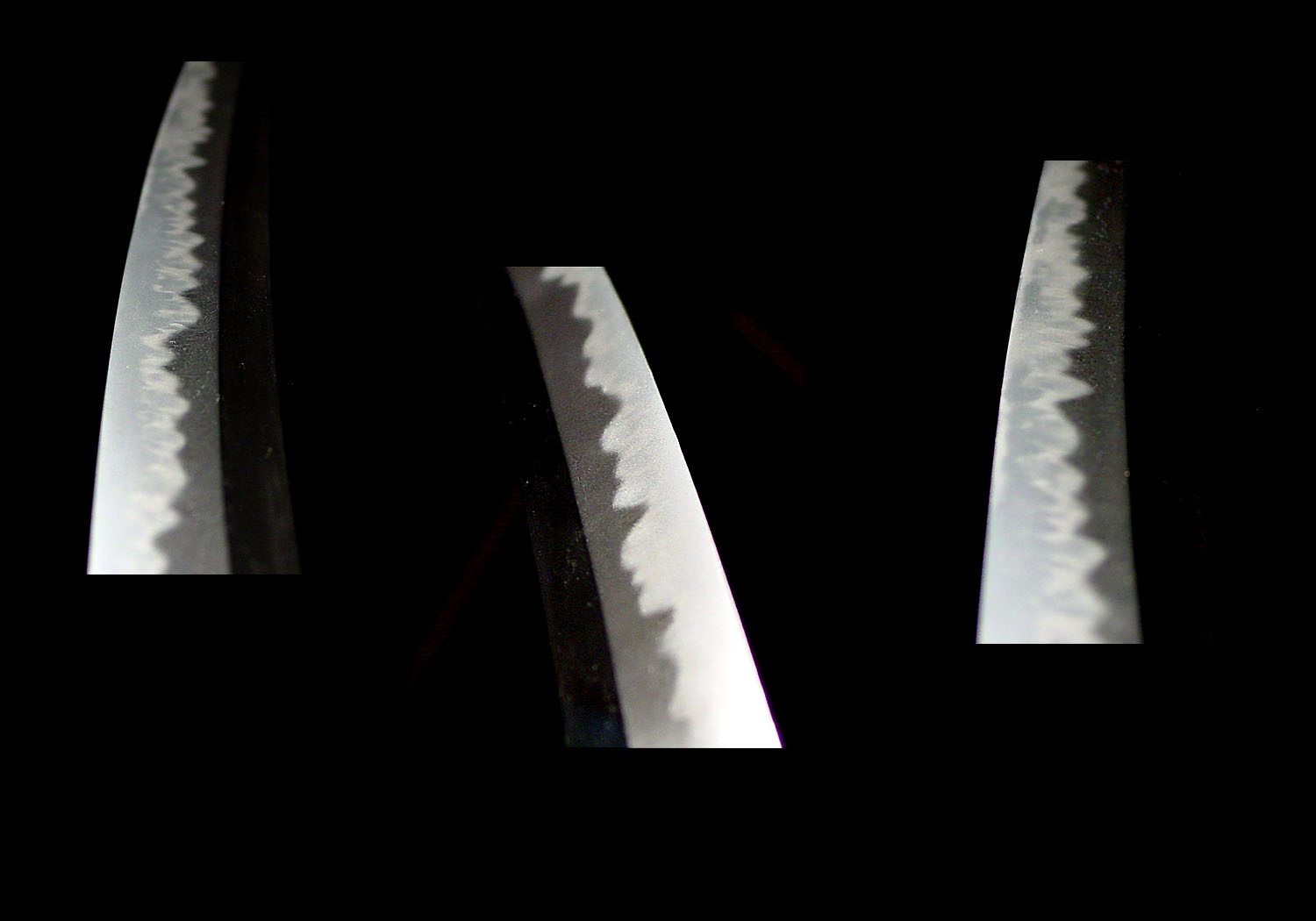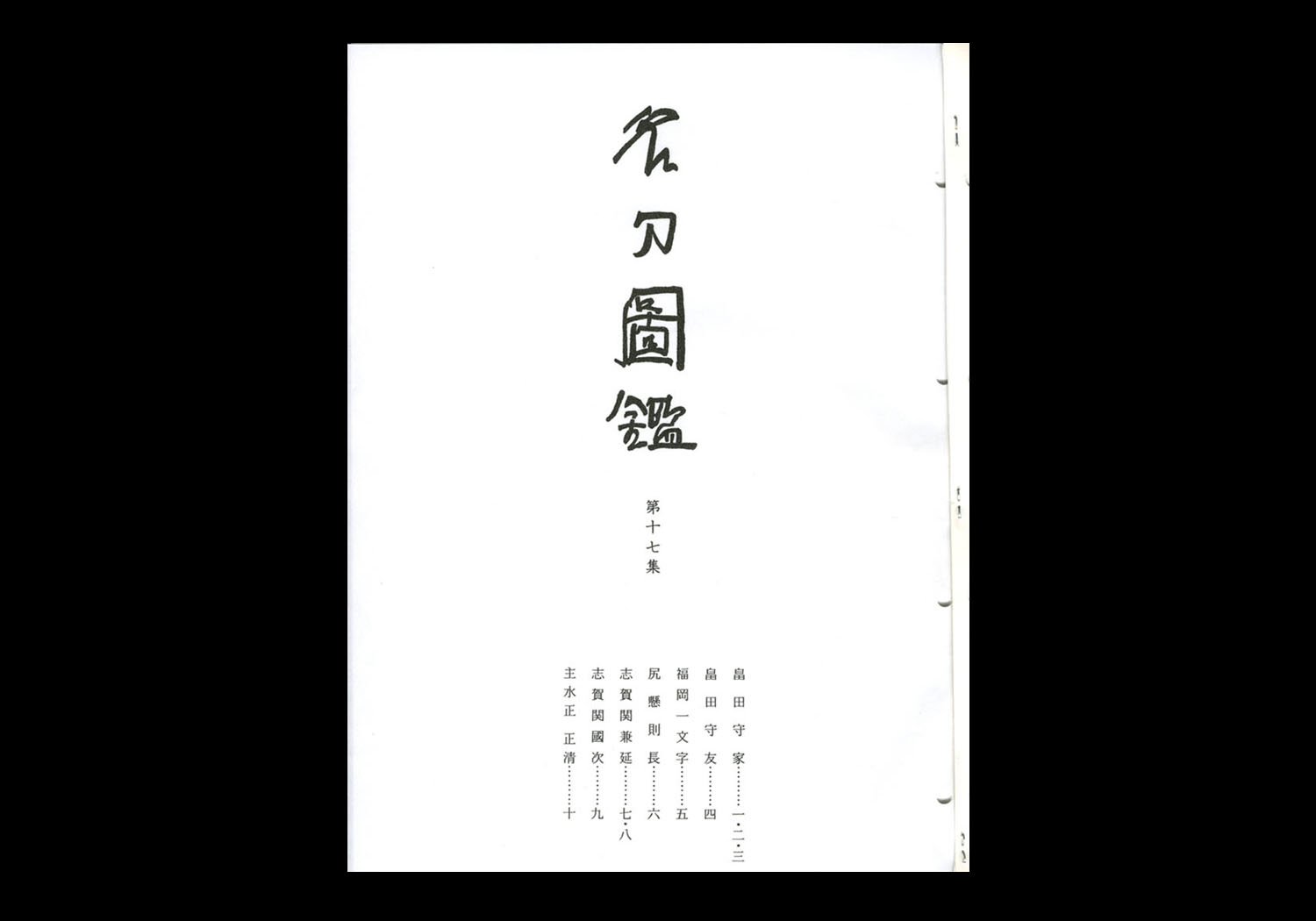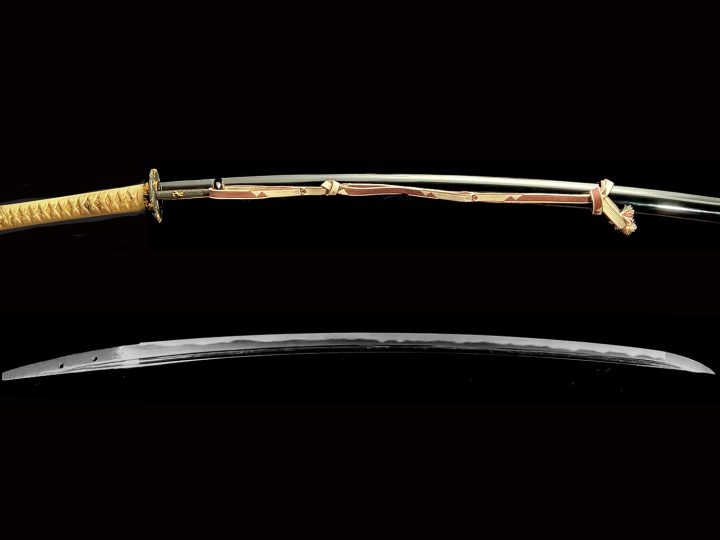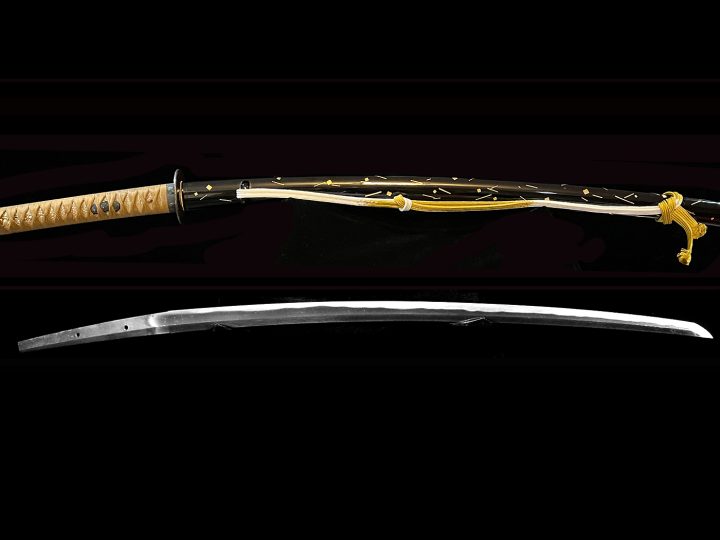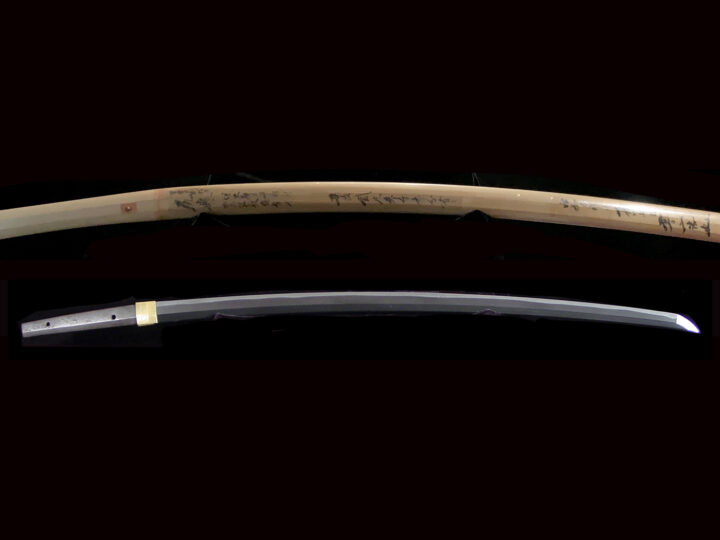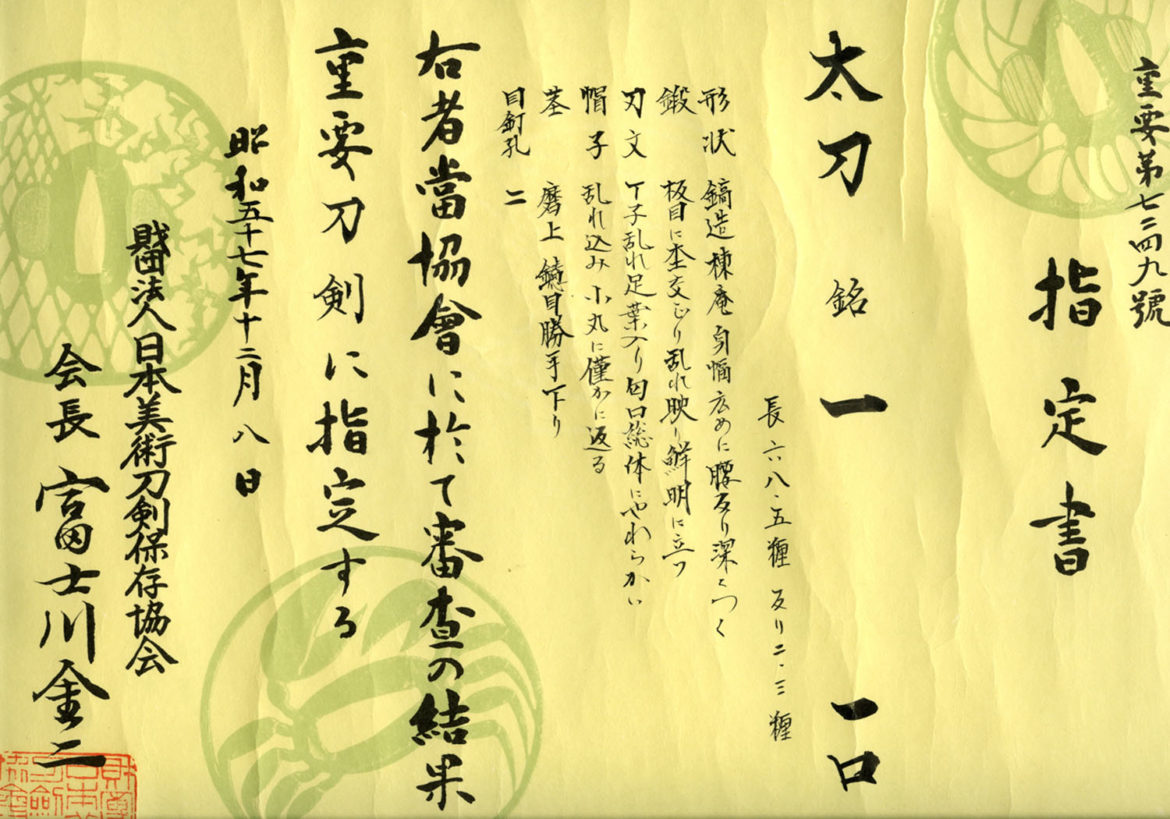
This is an important and well-known blade from the middle Kamakura Era made by a smith of the Fukuoka Ichimonji School. It is signed with the character “Ichi”.
The Ichimonji School in Bizen Province was a large school that was founded in the beginning of the Kamakura period and lasted through the Nanbokucho period. From the beginning of the Kamakura period and up until the middle of the Kamakura period, works by this school are commonly referred to as Ko-Ichimonji works. From the beginning of the Kamakura period and through the middle of the Kamakura period, the center of the production done by this school was in the area called Fukuoka. From the end of the Kamakura period and through the Nanbokucho period, the areas of production of the Ichimonji School disseminated to Yoshioka, Iwato and Katayama.
The name of the school is derived from the fact that many of the swords extant today are signed only with the Kanji character “Ichi”. To this day there is uncertainty as to whether any of the smiths who signed with individual names are one and the same as any of these practically anonymous artisans who signed with only an “Ichi”.
This blade is a tachi that is signed with the character, “Ichi”. This type of signature together with the flamboyant style of temper and overall magnificent sugata shows us that it was made by one of the smiths of the Fukuoka Ichimonji School during the middle Kamakura Era. This is a named tachi that was the treasure of the Kusarigama Daimyo family. The name of this tachi is Ima Aranami (today’s stormy seas).
The Kitsuregawa Daimyo ruled in Shimotsuke (modern day Tochigi Ken). This Daimyo family was the direct descendent of the Ashikaga Shogunate family who ruled all of Japan during the Muromachi Era. The Kitsuregawa family ruled Shimotsuke from 1590 to 1868 when the feudal system was abolished.
This blade is published in the Tsuchiya Oshigata, the Imamura Token Kowa, and in Fujishiro Matsuo’s Meito Zuikan. In fact, Fujishiro, a Living National Treasure, gave this blade its current polish. Accompanying this blade are three shirasaya, the oldest of which dates to the end of the Edo Era.
The oldest shirasaya has a sayagaki by several people. The writing on the obverse of this shirasaya was, written by either a scribe for the Kitsuregawa Daimyo family or possibly by Honami Heijuro. It gives the name of the blade, the length, and states that this blade was worth 250 Dai Kin Su Mai (250 koban gold coins). The reverse of the shirasaya was written by two of the Honami family of sword appraisers. The top half was written by Honami Nisshu. He states that this blade is the meibutsu (famous treasure), Ima Aranai Ichimonji. He goes on to say that it is a Juyo Token that is published in the Tsuchiya Oshigata and the Imamura Token Kowa.
The writing on the bottom half of the reverse side of this first shirasaya is by Honami Choshiki who lived in the late Edo Era. In his writing, he stated that he agreed with Honami Heijuro (possibly the writer of the obverse of this shirasaya) that this blade is, indeed, the Ima Aranami Ichimonji.
The author of the obverse of the second shirasaya is unknown. He wrote that this is the Ima Aranami Ichimonji that belonged to the Kitsuregawa family. He states that it is published in the original Tsuchiya Oshigata Makimono (scroll) type oshigata. He also refers to the sayagaki on the first shirasaya done by Honami Heijuro and Honami Choshiki. The writing on the reverse of the second shirasaya is by Honami Nisshu. On this side, he repeated the information that has been written.
The writing on the third shirasaya is also by Honami Nisshu and he once again repeats the existing information.
The following is the specific information about this blade as published in the 29th Juyo Token shinsa on December 8, 1984:
Measurements: Length: 68.5 cent.; Curvature: 2.3 cent.; Width at the base: 3.1 cent.; Width at the point: 2.1 cent.; Kissaki length: 2.1 cent.; Nakago length: 22.8 cent.; Nakago curvature: 0.3 cent.
Construction: This is a shinogi-zukuri tachi with an iori-mune. The blade is wide, and the koshi-zori is deep. The medium sized kissaki is stubby and ikubi in style. The kitae is itame mixed with mokume with a mixing in of large hada here and there. The jigane contains conspicuous midare-utsuri. The hamon is choji-midare, which has flamboyantly irregular undulations. There is ashi and yo activity, and the entire nioiguchi is soft. Here and there are places with shimi. The boshi is midare-komi with a ko-maru and short kaeri. The nakago is suriage with a sakiba-agari-kurijiri. The yasuri are kattesagari, and there are two mekugi-ana. On the hakiomote above the old mekugi-ana rather high up on the nakago and almost in the center is the character “Ichi”.
Description: The blade is just cut down a slight amount, making it a nearly ubu tachi of the Fukuoka Ichimonji School. Among the works of the Fukuoka Ichimonji School, there are a variety of signatures including swords like this one with just the character “Ichi” engraved on the nakago, swords with just the engraving of a specific art name, and swords with the engraving of “Ichi” accompanied by specific art name. The school was prosperous from the early part of the Kamakura until the middle of the Kamakura period; however, the style of workmanship in the early period swords was more conspicuously ko-midare than choji that was rather Ko-Bizen in style. With the advent of the middle period, a flamboyant choji-midare hamon made its appearance, and in the ji, a distinctive midare-utsuri was emphasized. This tachi fully displays the style of workmanship seen in the middle Kamakura period works of this same school, and the niku-oki is superb.







